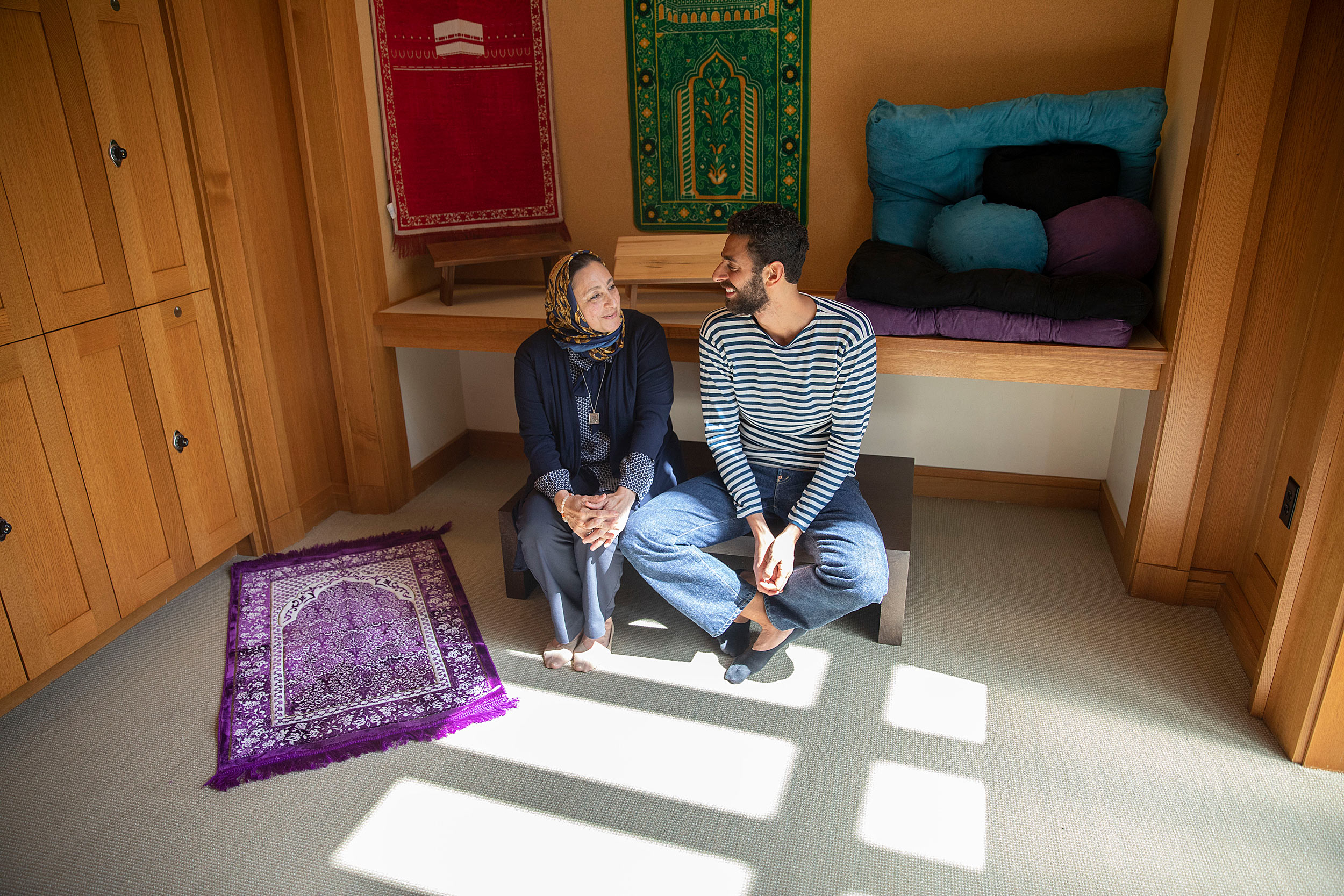
Photos by Kris Snibbe/Harvard Staff Photographer
Harvard’s sacred spaces
New and old spots encourage pause and reflection, for religious and mindful communities alike
Yaseen Eldik graduated from Harvard Law School (HLS) in 2016. It was a period marked by “crippling, depressing anxiety,” unease rooted in the rhetoric of a xenophobic campaign season, and pressures associated with his chosen field and uncertain future.
A spiritual person who had worked in the Obama White House’s Office of Faith-Based and Neighborhood Partnerships, Eldik spent much time that year, as in any year, in prayer. Time for meditation and reflection helped ground him, and kept him moving forward. Often, his thoughts turned to what it would mean for his institution, to which he had become deeply attached, to create a space for this very activity. “It’s definitely something that would have made my life easier,” he said.
Fast-forward two years, and that space exists, thanks to an initiative spearheaded by Jeff McNaught, senior director of student affairs and administration, and to the counsel of Eldik himself. Opened at the start of 2017–18 academic year, HLS’ Interfaith Prayer and Meditation Space offers students a unique place for religious observance, meditation, and prayer.
An attractive, austere room tucked into a corner of Wasserstein Hall and accessible only to students, it features sleek white oak lockers, kneelers, and racks to hold shoes; colorful prayer rugs and pillows for meditation; and a large window, 5 feet high, the bottom half of which is frosted to preserve privacy while letting in soft light. On a wall facing east, a Post-it note performing as a makeshift mihrab denotes the direction of Mecca. Nearby, on the same bulletin board, are the Lord’s Prayer and verses from 1 Thessalonians and the Psalms.
“Yaseen really helped to put my mind at ease when we were designing the space,” said McNaught. “Both in terms of the size itself, and what kinds of things needed to be included, and then HLS Facilities did an incredible job in making it happen over the course of that summer. It’s been great to see this year how many students are using the room. Yaseen was right when he said that people would be happy to have a quiet, clean space with a few simple amenities for prayer.”
The space at the Law School is one of several on campus offering students, faculty, and staff the opportunity to engage in meditation and prayer. Also new during the last academic year is Tufnell Park Meditation Room in the renewed Winthrop House, which reflects Faculty Deans Ronald S. Sullivan Jr. and Stephanie Robinson’s commitment to students finding agency for self-care.
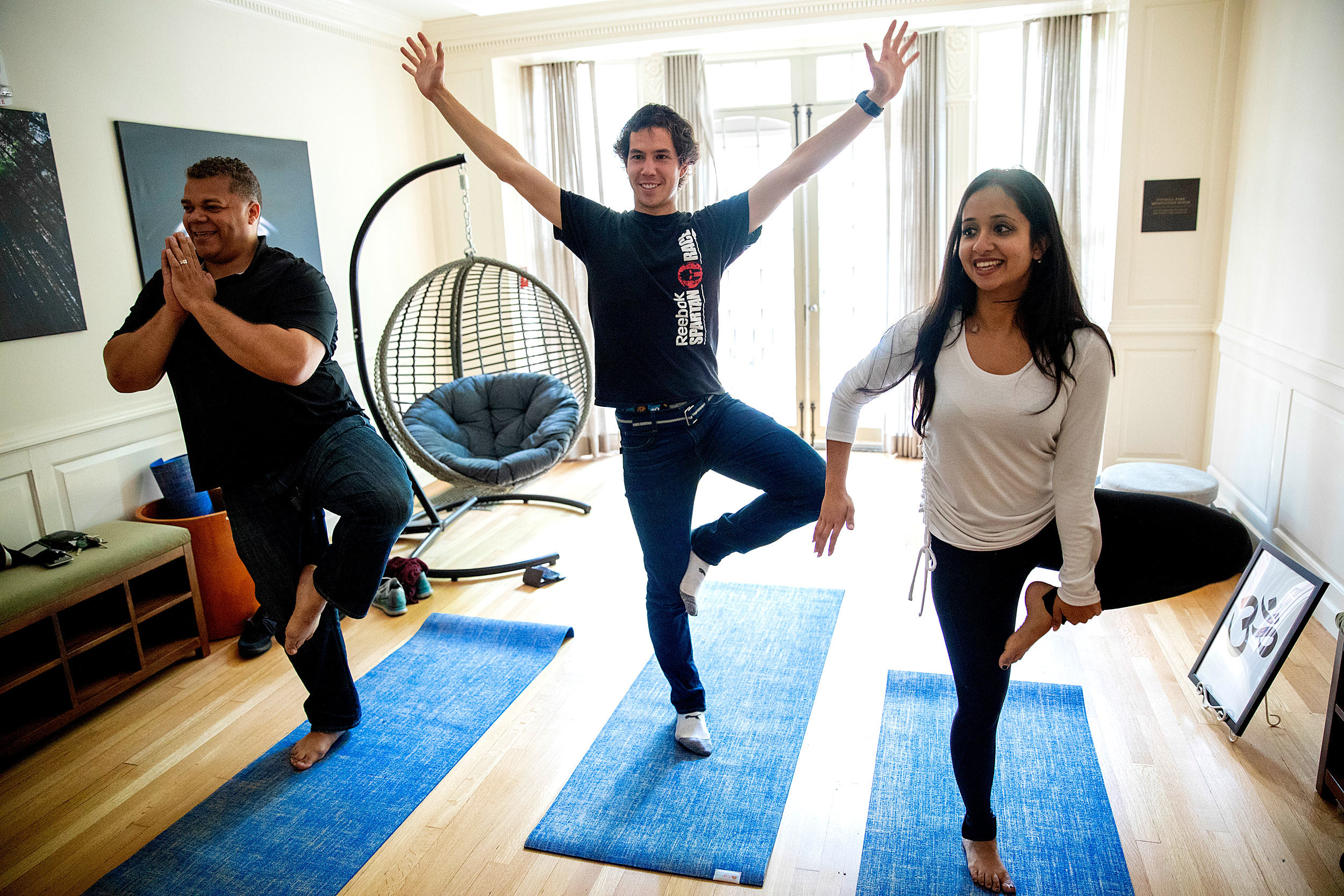
A wudu station, for the ritual cleansing required of Muslims prior to salah prayer, newly graces a washroom just outside of Divinity Hall Chapel (where, in 1838, Ralph Waldo Emerson gave his famous Divinity School Address).
In April, Memorial Church celebrated the anniversary of its student oasis, which had opened a year earlier to serve Harvard’s faith-based communities. The oasis, which brings together a diverse cross-section of religious and spiritual life, features a contemporary kitchen, meeting rooms, and a quiet, comfortable study lounge.
“I feel it has been successful because we set out to create a space that would serve as a site of human connection,” said the Rev. Jonathan L. Walton, Plummer Professor of Christian Morals and Pusey Minister in the Memorial Church. “No matter who you are, no matter where you’re from, you will find a place of comfort, and more importantly, a space of grace.”
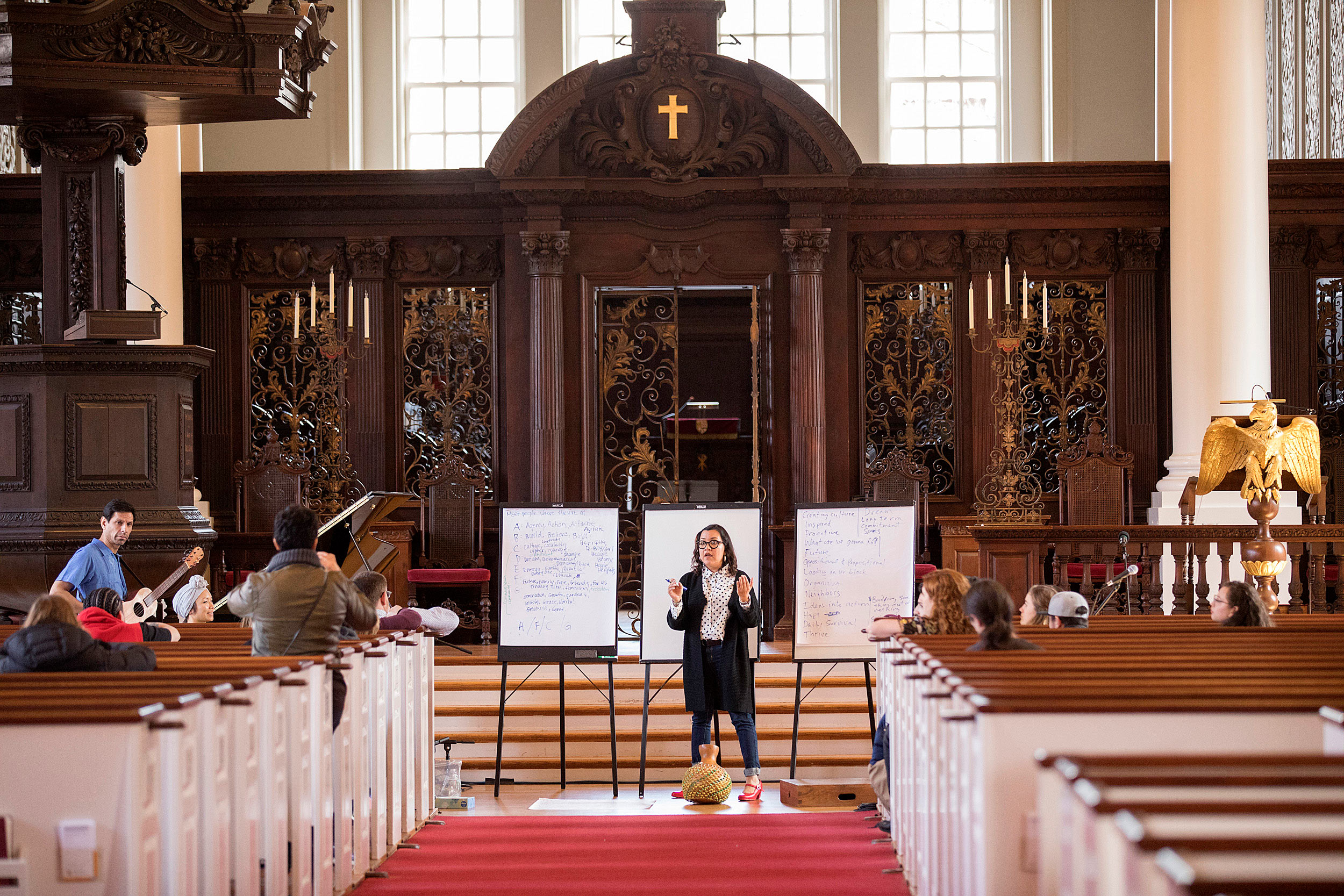
“No matter who you are, no matter where you’re from, you will find a place of comfort, and more importantly, a space of grace.”
the Rev. Jonathan L. Walton
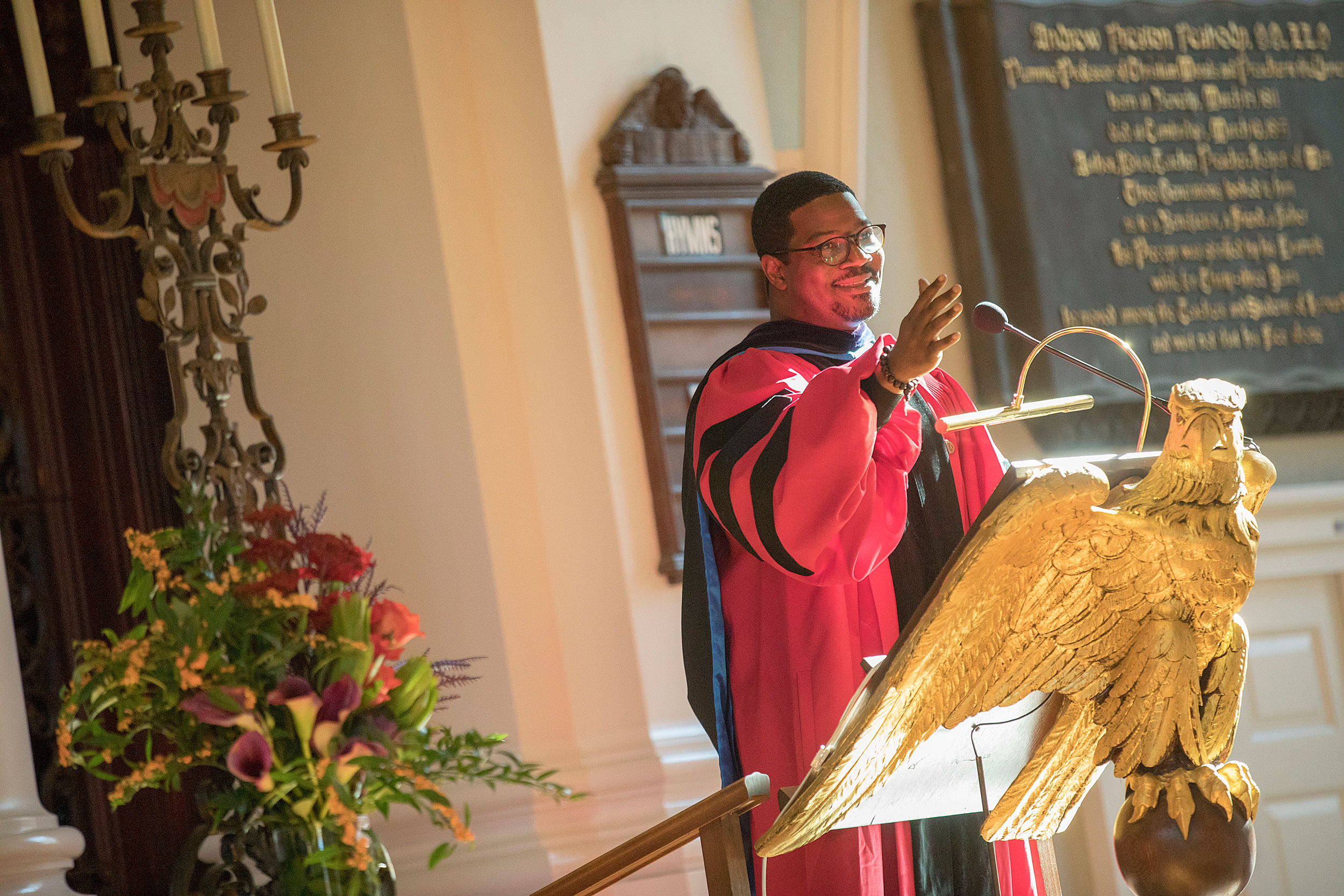
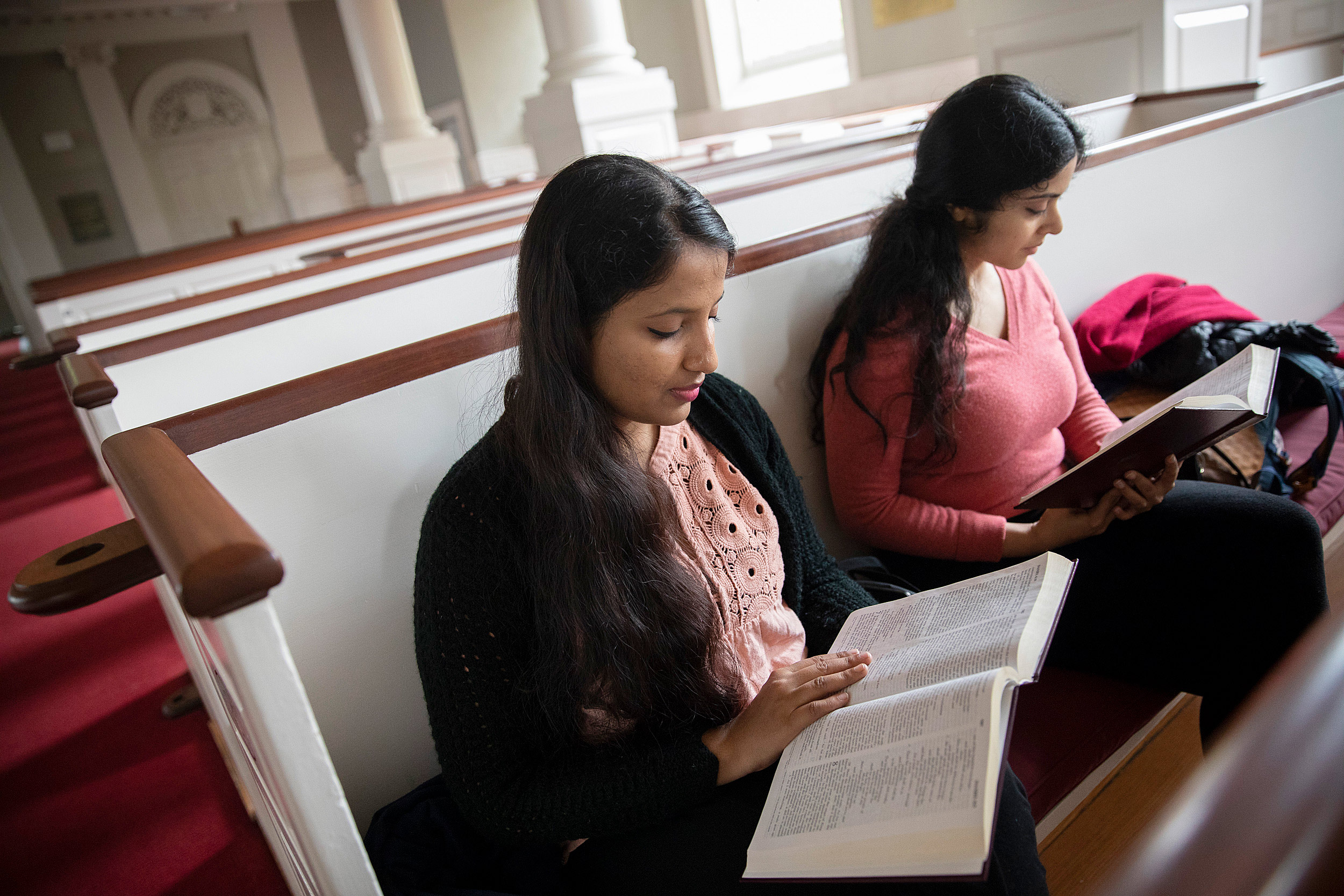
The Rev. Jonathan L. Walton delivers a sermon at Memorial Church. Lalitha Sindhuri (left) and Anandana Kapur read the Bible.
Last spring also marked the first anniversary of a new space for Harvard Hillel, which completed renovations on the Keidan Family Commons for Jewish Life as part of an ongoing renewal process at Rosovsky Hall. The new space, designed to create a more welcoming and inclusive experience on the ground floor, fosters conversation among members of Hillel minyanim (prayer communities), between prayer services, meals, and other activities.
“Hillel is really the center of the diverse Jewish community at Harvard,” said Hillel President Corey Gold ’19. “When he first designed the building, which opened in 1993, the architect Moshe Safdie was intent on making it feel like one, unified space, where each of the respective groups — though praying separately — could see each other across the courtyard, and then come together afterwards in conversation, and for dinner. The renovated first floor and new lounge make it even easier for us to do this, which is so important considering that the number of ‘Hillel regulars’ who attend prayer services, meals, and other programming has only grown.”
Last year, for example, the Reform minyan began meeting regularly for Friday night services, and this year the Orthodox minyan expanded from just one daily service in the morning to another in the afternoon.
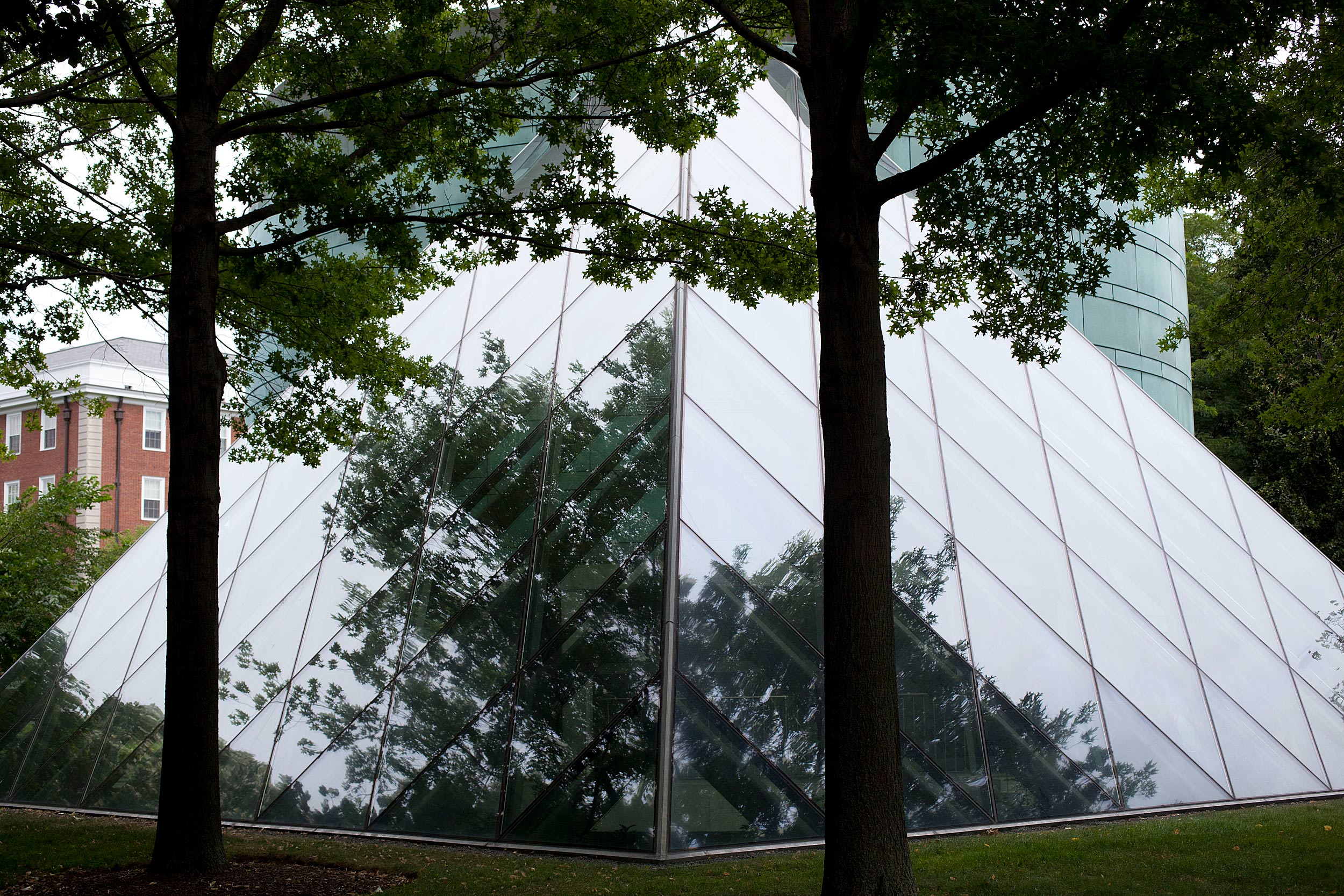
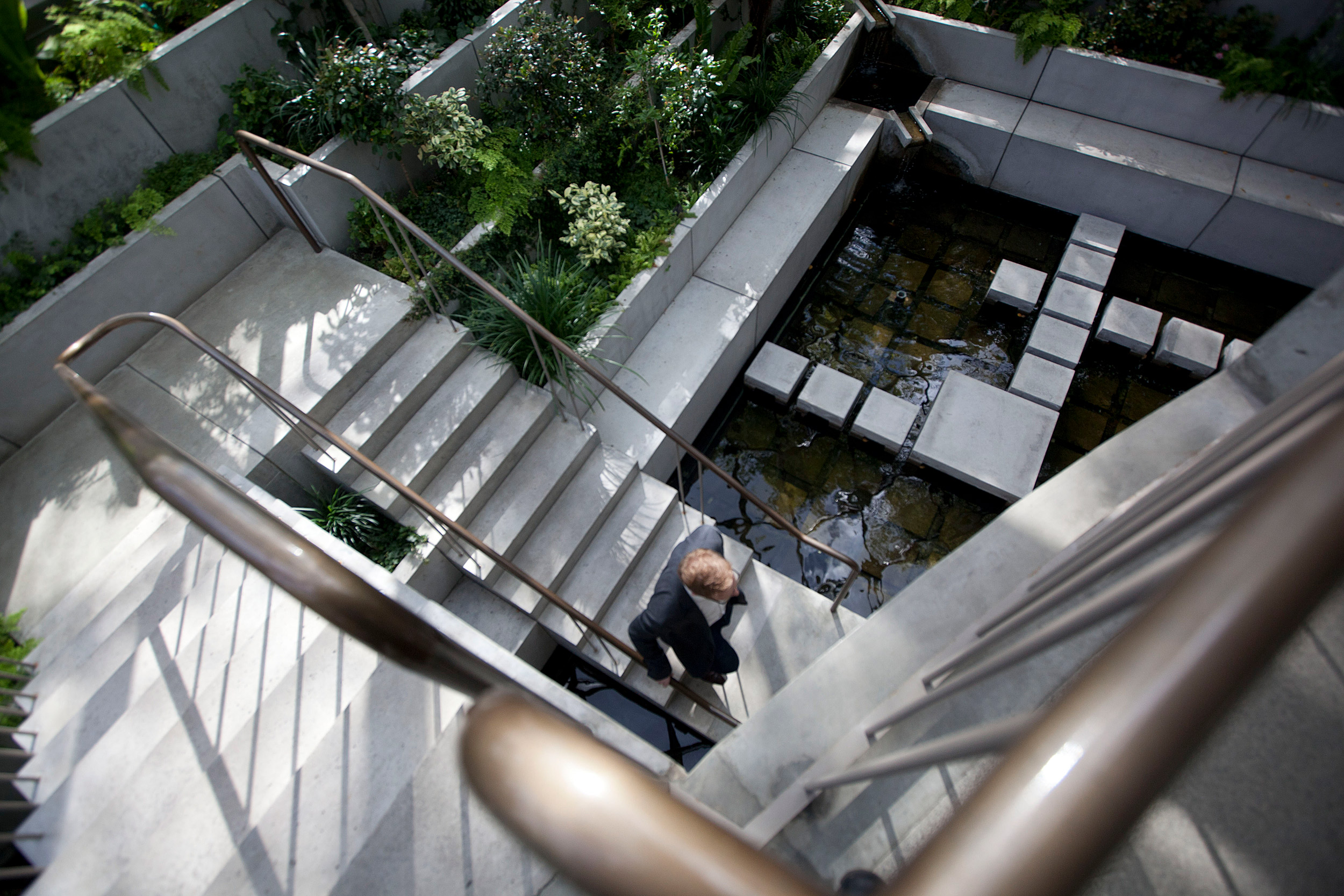
Nascent programs designed to quench students’ thirst for spiritual and meditative life are popping up all over campus, often in new spaces. At Winthrop House, new weekly prayer sessions are open to students of any faith, or no faith at all.
“We have this time to allow students the opportunity to join us in prayer as well as to ask us questions about praying, or to ask for prayer about anything they have going on in their lives,” explains Carl Miller, a resident tutor who leads the group with two other tutors: his wife, Valencia, and Drew Wong.
Winthrop House also offers would-be seekers weekly yoga sessions from its Robert M. Beren Hall rooftop commons, a welcome addition that lets yogis take in spectacular views over Harvard and the Charles River while grounded in tadasana.
“It was very important to me that we create a holistic space for students to relax, reflect, and recharge,” said Robinson. “Wellness and well-being are essential for students, and we strive to foster a culture within the House that encourages students to find the time and the space for self-care.”
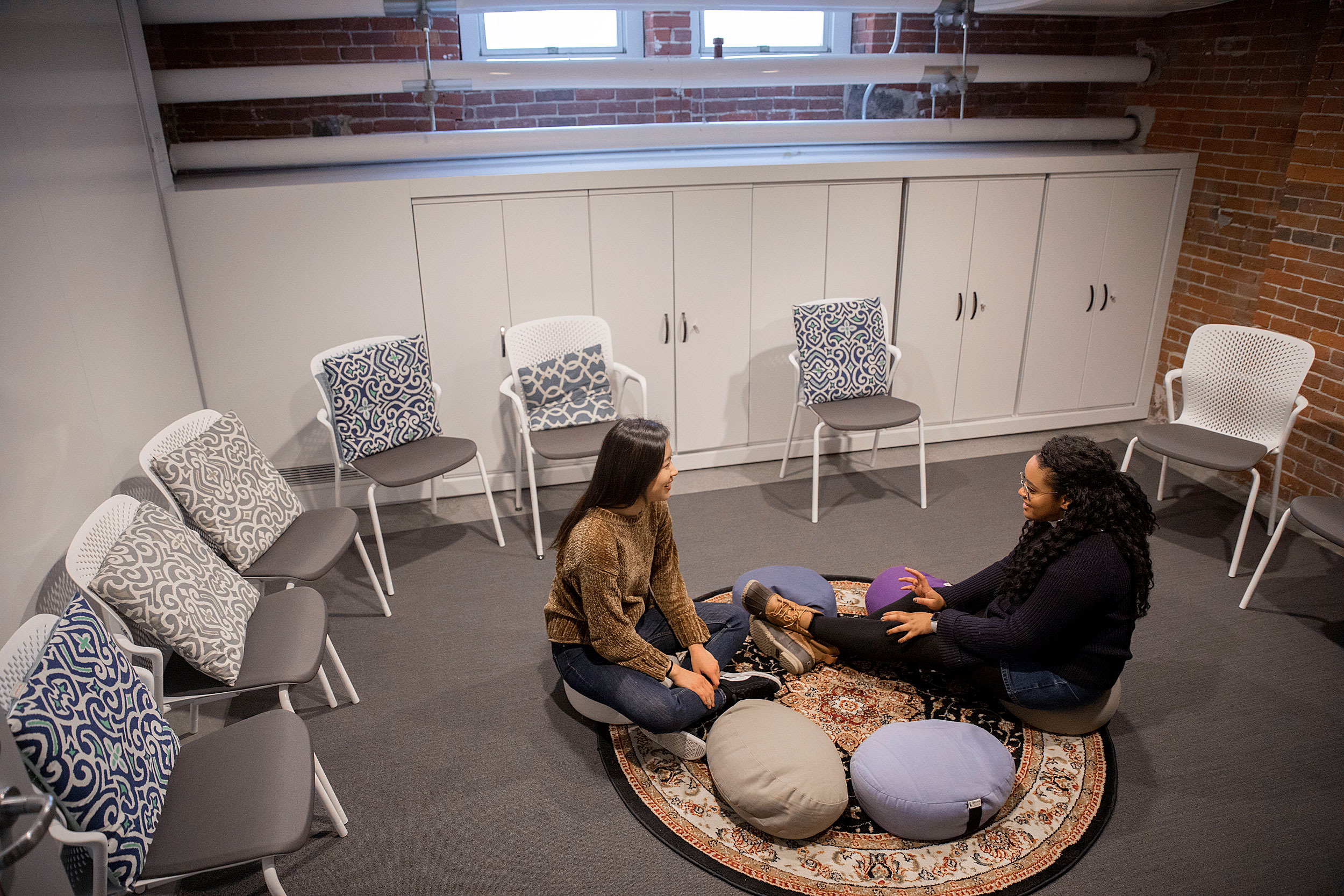
In Grays Hall, where a serenity room built in 2014 to serve College first-years was reopened in January after renovations to the basement, midday meditation sessions are held Monday through Friday. Sponsored by Harvard’s David S. Rosenthal Center for Wellness and Health Promotion, these are open to staff, faculty, and students alike. The center also offers a four-week Koru meditation course that teaches mindfulness, meditation, and resilience.
Molecular and cellular biology concentrator Connor Horton ’18 pursued various perspectives on meditation throughout his years at Harvard after the Koru course introduced him to the practice his first year. Since then, he has adopted meditation as an important part of his life, cultivating his own techniques while attending group sessions in Winthrop House. “Meditation in general allows me to check in and see how I’m doing, and sort through what’s on my mind,” Horton said. “And I enjoy group meditation sessions as a way to connect to other people. They offer a collective energy which you don’t get on your own.”
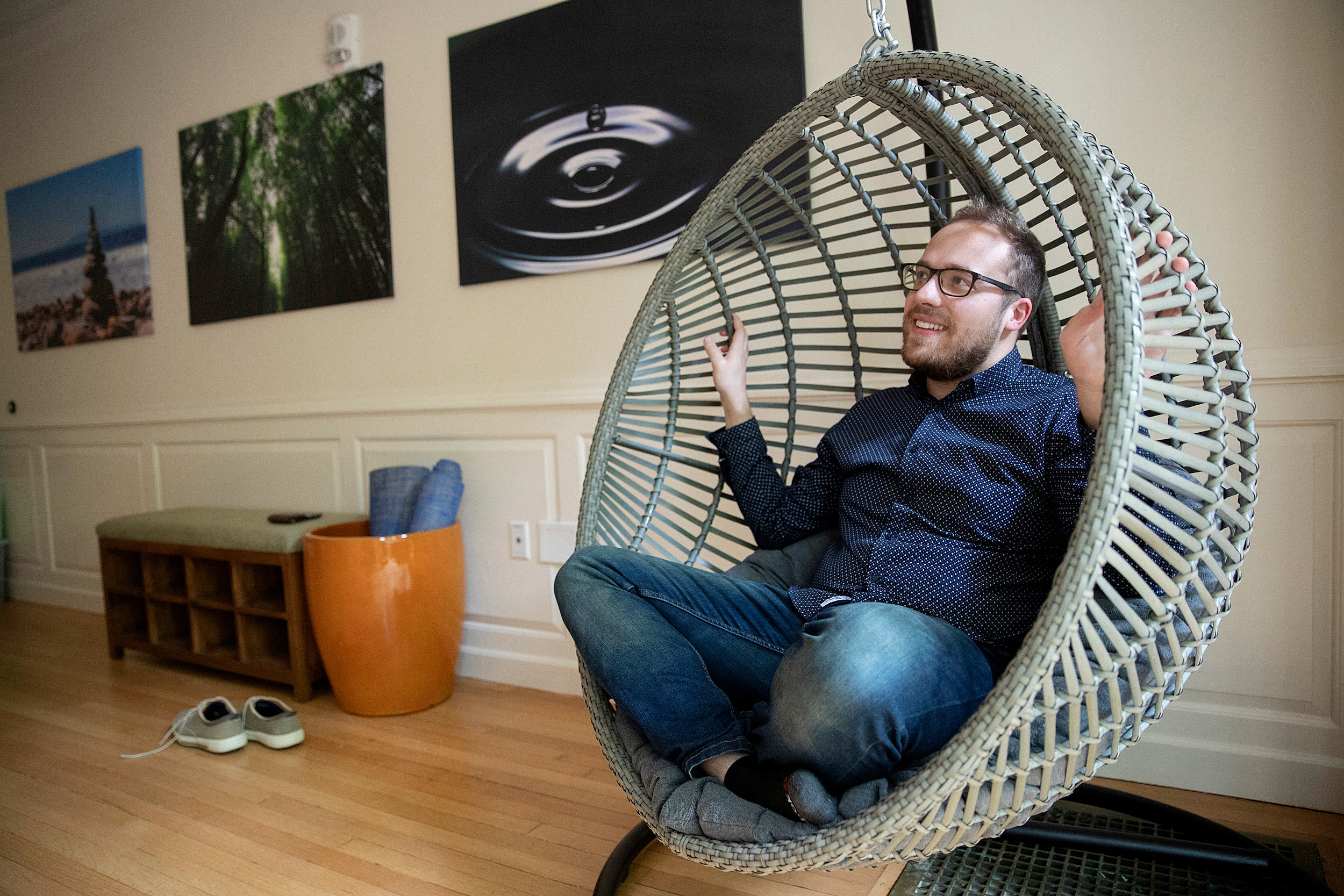
Existing groups have taken the reins and created their own opportunities in new spaces across campus. At the Memorial Church, the Mellon Mays Undergraduate Fellows, Cru, and Athletes in Action are a few of the groups that reserve time for meetings. (The Harvard University Choir and the Kuumba Singers of Harvard College also take advantage of the choir room for rehearsal.) At HLS, Christian Fellowship and Muslim Law Students Association both reserve the prayer and meditation room for group sessions daily.
Of course, even as Harvard builds fresh places and expands upon its programmatic offerings, there are myriad existing spaces that can offer religious, spiritual, or meditative experiences. In the modern, cylindrical Class of 1959 Chapel, students at the Business School can take in a concert or a nondenominational service, or sit peacefully watching plump koi swim beneath a pyramid of glass. A stroll through the collections of the Harvard Art Museums can offer an opportunity to leave behind the stress of an impending project due date. The meditation room at the Center for the Study of World Religions, blessed in Sanskrit by a Hindu monk of the Ramakrishna order when it opened in 2010, offers any member of the Harvard community a place to pray, rest, and reflect.
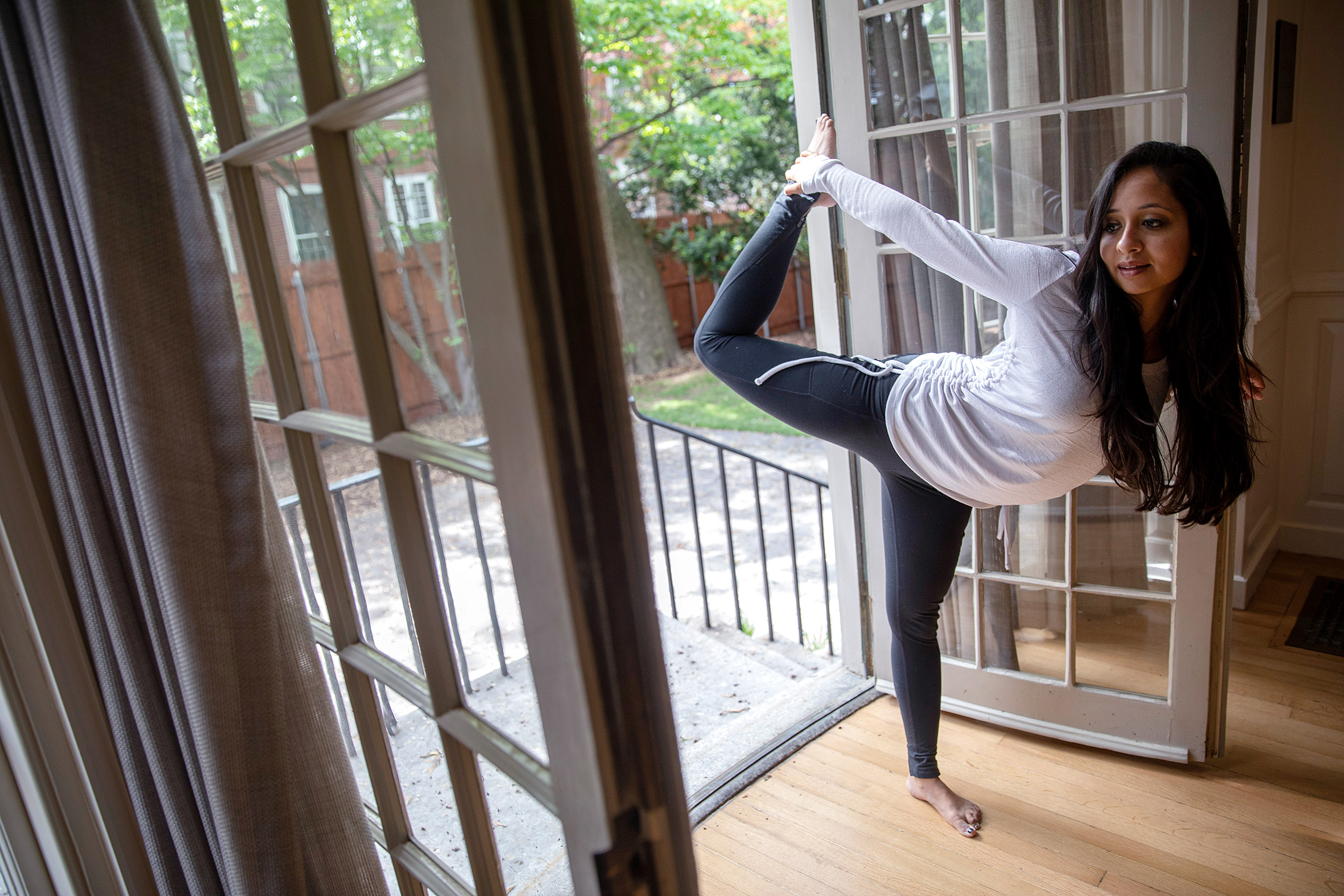
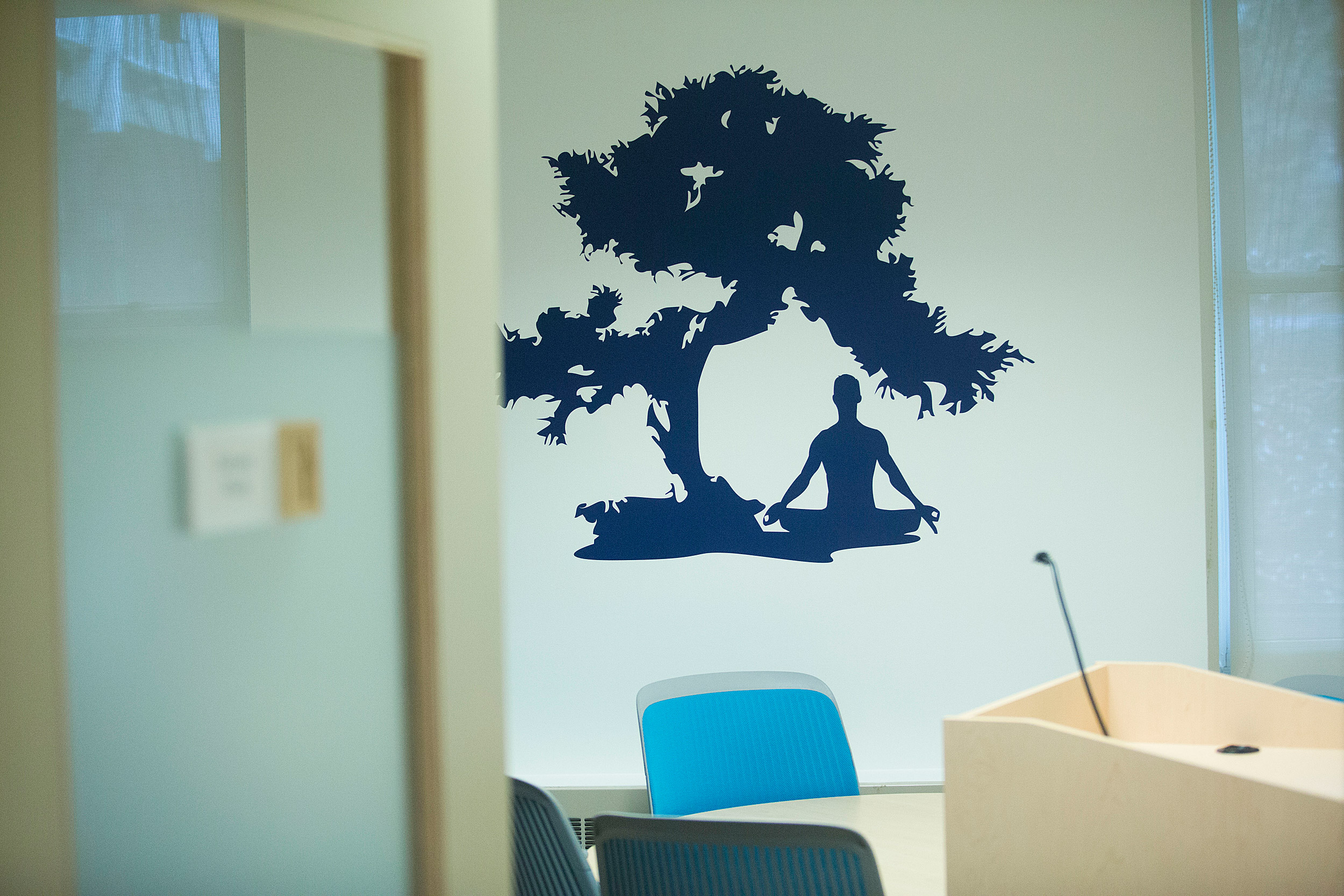
“Perhaps the most interesting meditation spaces are the most unlikely ones,” said Nancy Costikyan, director of Harvard’s Office of Work/Life. “On the train. In the Yard. In a cubical. We have little ‘Quiet please — Meditation at Work’ signs that people can hang on their office doors or on a cubicle for when someone is meditating and is asking not to be interrupted. Sometimes, all it takes is to find a way to make an existing space your own.”
Still, for some, like Eldik, the new, concerted initiatives at Harvard mean a lot.
“There is such deep, symbolic meaning for an institution like Harvard Law to decide to invest in a space for meditation and prayer,” he said. “Harvard Law can be such a competitive place. But for it to take the time to pause and then open itself up to student liberty and to want to support healthy, diverse reflection, this signals something greater, and can have an impact on trends in higher education, and greater society beyond.”



